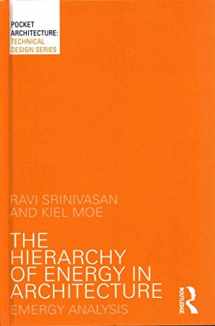
The Hierarchy of Energy in Architecture: Emergy Analysis (PocketArchitecture)
Book details
Summary
Description
The laws of thermodynamics―and their implications for architecture―have not been fully integrated into architectural design. Architecture and building science too often remain constrained by linear concepts and methodologies regarding energy that occlude significant quantities and qualities of energy.
The Hierarchy of Energy in Architecture addresses this situation by providing a clear overview of what energy is and what architects can do with it. Building on the emergy method pioneered by systems ecologist Howard T. Odum, the authors situate the energy practices of architecture within the hierarchies of energy and the thermodynamics of the large, non-equilibrium, non-linear energy systems that drive buildings, cities, the planet and universe.
Part of the PocketArchitecture series, the book is divided into a fundamentals section, which introduces key topics and the emergy methodology, and an applications section, which features case studies applying emergy to various architectural systems. The book provides a concise but rigorous exposure to the system boundaries of the energy systems related to buildings and as such will appeal to professional architects and architecture students.


We would LOVE it if you could help us and other readers by reviewing the book
Book review



